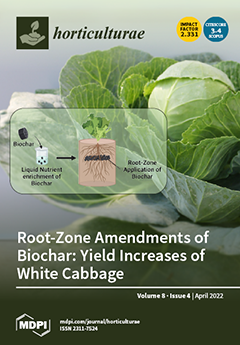The antioxidant, antibacterial and antifungal properties of essential oils (EOs) of
Juniperus thurifera L., a plant utilized in traditional, herbal medicine, were investigated. The EOs were extracted by use of a Clevenger apparatus and phytochemicals identified by gas chromatography coupled with mass spectrometry
[...] Read more.
The antioxidant, antibacterial and antifungal properties of essential oils (EOs) of
Juniperus thurifera L., a plant utilized in traditional, herbal medicine, were investigated. The EOs were extracted by use of a Clevenger apparatus and phytochemicals identified by gas chromatography coupled with mass spectrometry (GC/MS/MS). The antioxidant capacity of EOs of
J. thurifera was determined by 2,2-diphenyl-1-picrylhydrazil (DPPH), total antioxidant capacity (TAC), and ferric reducing antioxidant power (FRAP). Antimicrobial activity of EOs of
J. thurifera was determined against four fungal strains,
Candida albicans; ATCC 10231,
Aspergillus niger; MTCC 282,
Aspergillus flavus; MTCC 9606 and
Fusarium oxysporum; MTCC 9913 and four bacterial strains,
Staphylococcus aureus; ATCC 6633,
Escherichia coli; K12,
Bacillus subtilis; DSM 6333, and
Pseudomonas aeruginosa; CIP A22, by use of the disk diffusion method, and microdilution method used to determine the minimum inhibitory concentration (MIC). EOs of
J. thurifera consisted of 31 compounds and were dominated by α-thujene (25%), elemol (12%) and muurolol (12%). Antioxidant activity recorded an IC
50 of 24 ± 0.71 µg/mL (DPPF), EC50 of 0.19 ± 0.01 mg/mL (FRAP), and 9.3 × 10
2 ± 38 mg EAA/g (TAC). The EOs of
J. thurifera exhibited significant antibacterial activity against all bacterial strains under investigation, especially
P. aeruginosa; CIP A22 with an inhibition diameter of 28 ± 1.5 mm and MIC of 4.8 × 10
−2 ± 0. 001 µg/mL. EOs of
J. thurifera also exhibited significant antifungal activity against
C. albicans; ATCC 10231 and
F. oxysporum; MTCC 9913 with an activity of 21 ± 2.1 mm, 32 ± 2.3%, and MIC of 9.5 × 10
−2 ± 0.001 Bioactive molecules found in EOs of
J. thurifera could be used as an alternative solution to antibiotics available on the market to combat microbial resistance.
Full article





